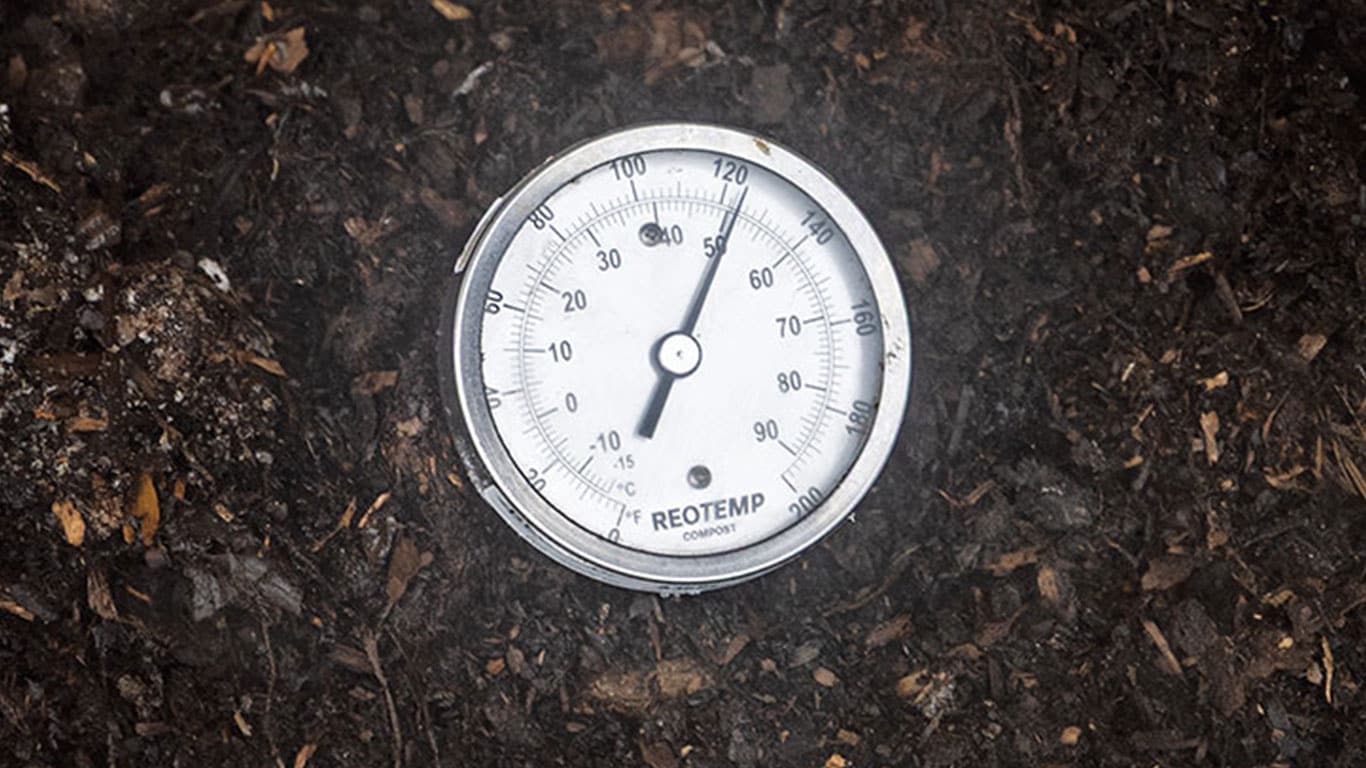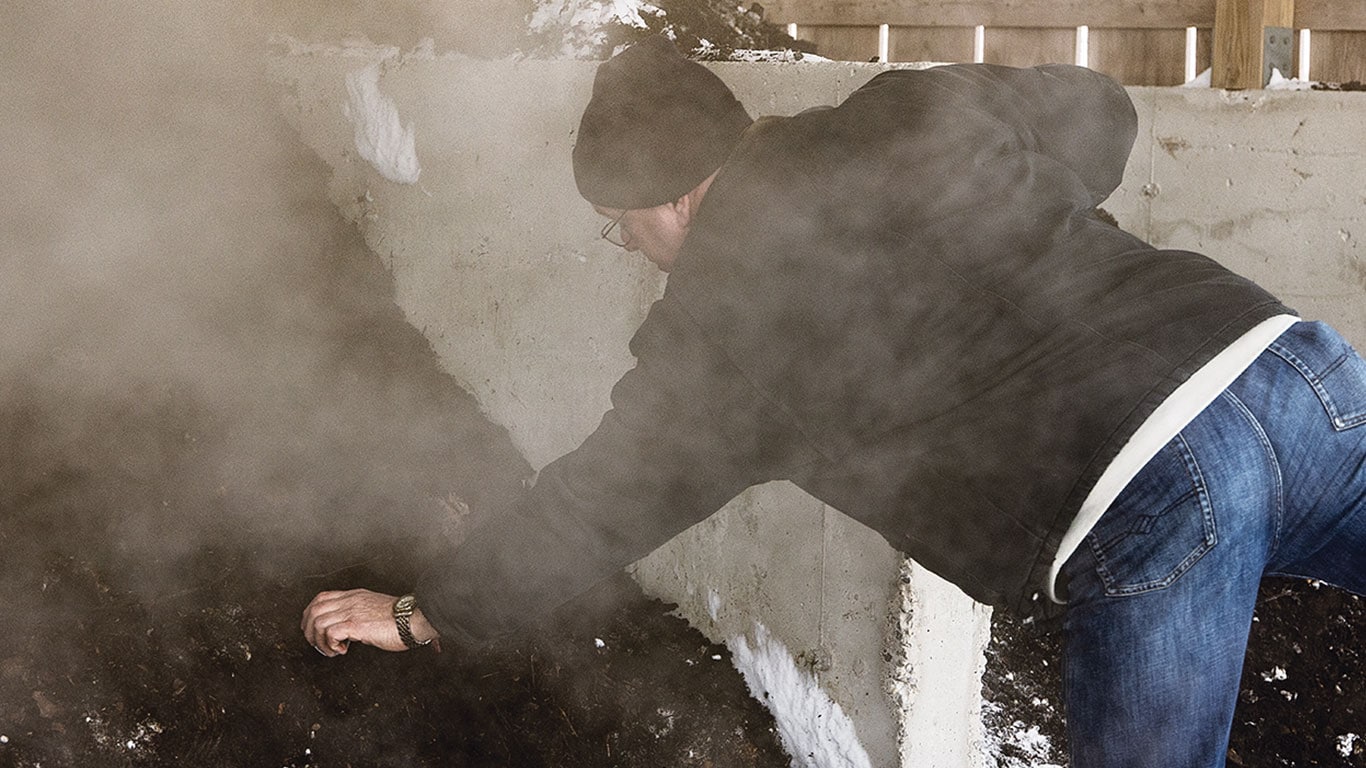Agriculture, Farm Operation November 01, 2025
Bring Out Your Dead
Deadstock composter turns livestock into potting soil.
Story and Photos by Lorne McClinton
Animals die; it's a part of farm life. No matter how carefully you tend your livestock there are always going to be mortalities. Beef producers know they're going to lose a few calves and the occasional cow. Hog producers expect to lose a few piglets every litter and the odd sow, too. And sheep always seem to find innovative ways to die. But what is the best way to handle deadstock?
Having a process to properly dispose of deadstock is critical to prevent environmental contamination and for disease control. It also keeps them from attracting coyotes and other unwanted scavengers to the farm. Many jurisdictions have put regulations in place, like Ontario's Nutrient Management Act, that governs this. Ontario's regulations state that producers must dispose of them within 48 hours from the time of death and lists a number of options for how they can do this. Farmers can use a collection service, compost, bury, incinerate, or put them in a disposal vessel. They can also be delivered to an approved anaerobic digester, an approved waste disposal site, or delivered to a vet for autopsy and disposal.
Dave and Ruth Kloostra, owners of Pine Tree Swine, a 150-sow farrow-to-finish hog operation in Monkton, Ontario, had used a collection service to cart their deadstock away until 2021. However, due to the rising cost of the service and the biosecurity risk, they started looking for other options.
They looked into the drum composters but in early 2022 decided to build a 36 x 24 foot, three-bay composter because of its added capacity. Fortunately they were able to get financial assistance from a government grant.
"Heaven forbid we ever get a major disease outbreak," Kloostra says. "But if we did I think ours could handle 20 dead finishers in a day."
Above. Microbial action in the composter substrate; Kloostra uses a mixture of wood shavings and horse manure, to generate heat (130°F to 140°F). It quickly turns the dead animal into a compost material that's similar to potting soil.
OMAFRA's (Ontario Ministry of Agriculture and Rural Affairs) 2023 publication, "On-Farm Bin Composting of Deadstock," by B. Groot-Nibbelink, H. Fraser, D. Ward, (www.ontario.ca/page/farm-bin-composting-deadstock) describes composting as a natural process where micro-organisms such as bacteria and fungi break down organic materials. When the process is finished, the dead animal has become a stable, dark-brown, soil-like material that can then be applied to land.
To work properly, you need to create a substrate with the right blend of carbon (C), nitrogen (N), oxygen (O), and water that fosters microbial growth. Groot-Nibbelink and Ward describe the ideal C to N ratio for microbes should be between 20:1 and 30:1. Since a dead animal will have a 5:1 ratio, the targeted mix of materials for both the mortality and the substrate should be 25:1.
Kloostra says it's very simple. He first placed wood shavings and manure from their horses into the composter. Microbial action starts to heat up to about 130°F to 140°F, creating a starter compost. After that, whenever they have a mortality, they place it on top of compost in a bay and bury it with at least a foot (30 cm) of 130°F compost from another bay.
"Then the important part is to just leave it alone, don't disturb it for at least three to six weeks," Kloostra says. "I can put a 600-pound animal in, and depending where it was placed in the bay, there will be very little left of it after three weeks. You won't see hardly any bones or anything else distinguishable most of the time and it will be ready to be used to start composting more deadstock in another bay. Since I reuse the compost it makes our mortality disposal very inexpensive."
Outside of the initial construction costs to build the composter, Kloostra says he's found no downsides. He says the biggest surprise is as long as the dead animal is buried under at least a foot or so of substrate there is no odor. It has the earthy smell of a backyard garden composter.
"I highly recommend them," Kloostra says. "I have a sensitive nose. The smell of a dead animal really makes me gag, but this doesn't bother me at all."
This also means it doesn't give off any of the smell of decay that attracts vultures or coyotes. Even the dog hardly goes in there. ‡
Read More

AGRICULTURE, EDUCATION
Phytoculture Replication
Canada farmer takes a high-tech path to farming.

AGRICULTURE, SPECIALTY/NICHE
Cheese on a Pedestal
A new museum shines a light on the art of cheesemaking.




